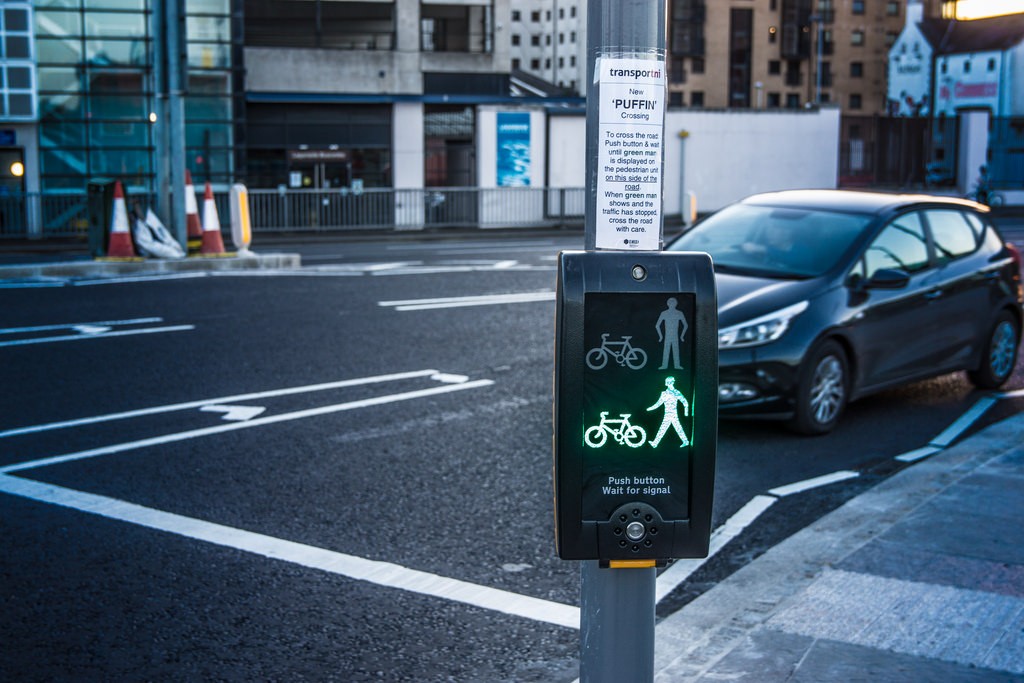The National Institute for Health and Care Excellence has said that councils should alter traffic lights so the “green man” stays on for longer, allowing elderly people an appropriate amount of time to cross the road.

The report found that older people, and those with limited mobility, find it difficult to cross the road in the time allocated, but that’s not the only thing that was identified as problematic.
The guidance also looks at issues of other obstructions that could deter the older generation from getting out and about. It was noted that councils should ensure clear walkways by making sure bins, street furniture, hanging baskets and parked cars should not obstruct anyone facing mobility restrictions.
This is particularly relevant for those reliant on a mobility scooter to get out and about, as they may be unable to remove the object in their way and in some cases, risk their safety in an attempt to get around. Councils are also advised to do more to ensure the footpaths are well-maintained, fixing pot-holes or broken paving slabs as soon as possible.
The guidance said: “The environment can make it difficult for some groups to be active. For example, older people and others with limited mobility may find it difficult to cross the road in the time allowed by crossing signals.”
A recent study by the University College London has found that people over the age of 65 walk a lot slower than the estimated 1.2 metres per second, which is the figure currently used to calculate crossing time.
It was found that on average, men over 65 walk at 0.9 metres per second and women move at 0.8 metres per second. This means that over 7 million elderly people do not have enough time to cross the road safely.
Professor Mark Baker, director of the centre for guidelines at Nice, said:
“The guideline outlines ways to overcome barriers to people being more active by making public spaces attractive, easy to get to and safe. It should not matter whether you are on foot, in a wheelchair, have a visual impairment or if you’re a parent pushing a pram. If streets, parks and other open spaces are well planned, everyone should be able to get round their local area easily.”
A study last year highlighted the importance of the older generation getting out and about, pointing out that declining health and limited mobility restricted their ability to engage with the outside world like they once did. In turn, this can have crippling effects on the mental health of senior citizens, who soon start to feel isolated and trapped in the same old daily routine.
As such, any kind of deterrence stopping the more vulnerable getting outside, such as substandard pavements and the lack of confidence to cross the road in time, should be dealt with immediately.
Below you will find some interesting points in relation to how the elderly can benefit from exposure to the outdoors:
Nature helps to boost immunity
When the older generation see something new in nature, such as the flowering of plants or ducklings along a river, they immediately feel more positive about life. This works wonders for their mental health and thus helps seniors to build and maintain a healthier immune system as a result.
People who spend time outside recover from injuries faster
This is particularly relevant to the more vulnerable members of society who are prone to experiencing injury. The power of natural light should never be overlooked, and those that spend time outside can recover from their injuries a lot faster.
All about that vitamin D
Vitamin D is directly related to an array of health benefits, including an improved immune system and a more positive outlook on life. Even just 15 minutes a day of time in the sun is plenty for a vitamin D boost, but pensioners will need to feel confident to go outside in order to reap the benefits.
Improved focus
Giving the brain a rest from the mundane tasks of everyday life allows it form new memories, and heal itself if any over-extension has been suffered. Being outdoors is the best way to do this, as you can never truly predict the things you will see and hear while out and about. In turn, this leads to an increased attention span and improved mental health.
Get energised
Sometimes, it’s not that the elderly are physically unable to get out and about, but that they have settled into a daily routine which makes them feel tired. The best way for sluggish seniors to conquer these feelings is by taking a walk, no matter how small, energising themselves and immediately feeling more active.
The aforementioned is just some of the reasons it is vital for the older generation to get out and about whenever possible. Here at Essential Mobility, we have a range of high-quality mobility scooters that will help the older generation get out and about whenever and wherever possible!
Image credit:





